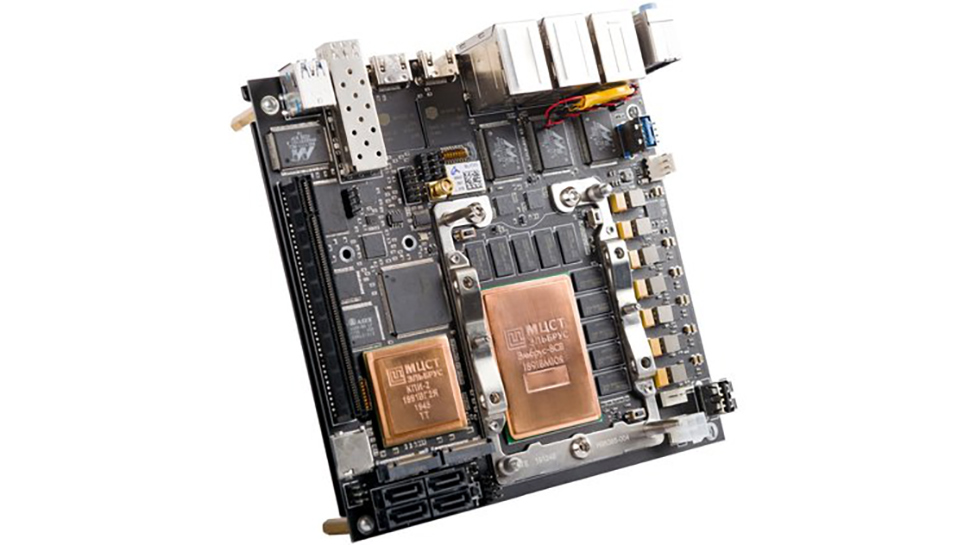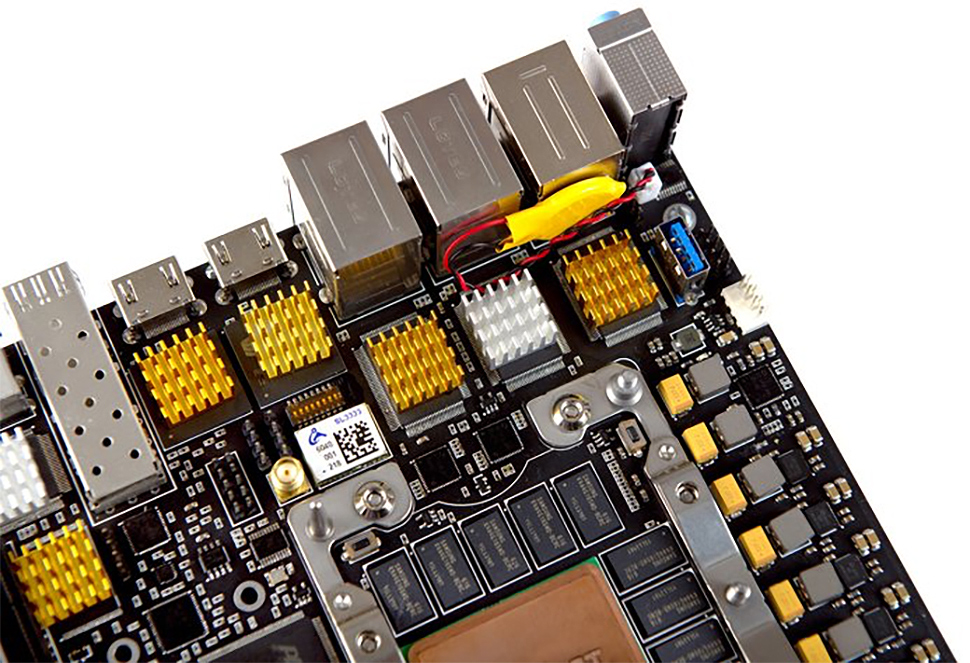VLIW CPU in a Desktop: Enthusiasts Crowdfund Elbrus-Based Mini-ITX Motherboard
High-end motherboard running MCST's Elbrus-8CB CPU may arrive shortly.
A group of enthusiasts have developed a Mini-ITX motherboard carrying the MCST Elbrus-8CB 8-core processor developed in Russia and based on a proprietary VLIW-like architecture. The platform is designed for various applications that require ultimate security as well as enthusiasts who want to try the unique CPU. The crew is currently crowdfunding money for production of the IcepeakITX Elbrus-8CB motherboard.
The Only General-Purpose VLIW CPU Family Today
General-purpose processors based on very long instruction word (VLIW) architectures have never taken off to a large degree because they are hard to program for. Intel tried VLIW with its Itanium (IA-64) processors for mission-critical applications and ultimately had to abandon them after its x86-64 Xeon processors gained generally similar capabilities and much higher performance. ATI Technologies (and eventually AMD) used a VLIW architecture for its TeraScale family of GPUs, but moved on to RISC-like architectures with GCN and its successors starting early 2010s as it wanted to make its GPUs more suitable for general-purpose compute workloads.
Today VLIW architectures are mostly used for DSPs as well as media processors for consumer electronics. But there is one company that still tries to polish off a VLIW architecture, it is called Moscow Center of SPARC Technologies (MCST) and it has been developing its VLIW-based Elbrus processors since 1986.
The Elbrus processors are based on a proprietary microarchitecture, but can also emulate x86 and x86-64 via runtime binary translation if needed. In the recent years MCST developed a number of server-grade Elbrus processors with up to 16 cores primarily for machines used by the government.
The IcepeakITX Elbrus-8CB: A Universal Motherboard
Since MCST's Elbrus processors feature a rather unique VLIW architecture, a number of desktops based on these processors aimed at software developers were introduced in Russia in the recent years. But those machines could not really be called high-end or universal even though some of them relied on high-end versions of Elbrus CPUs with eight cores.
By contrast, the IcepeakITX Elbrus-8CB is designed for systems that could be used for a wide variety of applications that need performance, security, and ultimate reliability. Essentially, the mainboard enables PCs that are more than desktops for software makers.
The IcepeakITX Elbrus-8CB platform carries an eight-core MCST Elbrus-8CB 1.50 GHz processor (which can be cooled down using any LGA3647 heatsink) that can be paired with 8 GB or 32 GB of DDR4-2400 memory, a PCIe 2.0 x16 graphics card, up to two M.2-2280 SSDs with a SATA interface as well as up to four 2.5-inch or 3.5-inch SATA storage devices. The motherboard comes with the MCST KPI-2 south bridge and carries multiple third-party controllers to support four GbE connectors (three RJ45, one SFP), two HDMI 2.0 display outputs, two USB 3.0 as well as five USB 3.0 ports, a COM header, audio connectors, and GPS.
Get Tom's Hardware's best news and in-depth reviews, straight to your inbox.
To ensure ultimate reliability, the IcepeakITX Elbrus-8CB uses a 14-layer PCB. In addition, the platform has a TPM SPI connector, a temperature sensor, two tampering sensors, gyroscope, fall detection sensor, and a water sensor. The processor and chipset use custom copper heat spreaders to ensure better heat dissipation.
Coming Soon
Development of the IcepeakITX Elbrus-8CB motherboard is about to be finished, which is when the creators will contact interested parties that can sign up for updates without paying anything. Those who eventually buy the platform will also get the full source code for board schematics, design specifications, and internal design comments. Also, they will get MCST’s proprietary C/C++ compiler and bootloader, but not their source code as designers of the board do not have access to these programs.
The latter fact actually indicates that the motherboard is not developed by MCST itself or any party close to it. To that end, it remains to be seen whether a third-party can procure processors and chipsets that are generally intended to be used by various government agencies and which are not in mass production just yet.
What to Expect?
One of the questions is what to expect from the Elbrus-8CB processor and the aforementioned IcepeakITX Elbrus-8CB platform. The CPU features eight cores operating at 1.50 GHz, 512 KB L2 cache per core, 16 MB unified L3, a quad-channel DDR4 memory controller (it is unclear whether the board uses all four channels) that supports up to 128 GB of DRAM, and a proprietary I/O channel offering 16 GB/s of bandwidth. The chip packs 3.5 billion transistors and is designed to be made using TSMC's 28 nm fabrication process. The chip dissipates up to 90 W of power.
The CPU uses the 5th generation Elbrus architecture and can deliver up to 24 FP64 FLOPS per clock per core when executing a program compiled for Elbrus, which is higher when compared to AMD's EPYC 'Rome' processor that can retire 16 FP64 FLOPS per clock per core. Yet, at 1.50 GHz, the CPU is capable of ~576 FP32 GFLOPS and ~288 FP64 GFLOPs, which is significantly lower when compared to AMD's 64-core EPYC CPUs (up to 2.60 GHz ~ 3.40 GHz) that can hit around 2.3 FP64 TFLOPS, nearly ten times higher. Meanwhile, modern eight-core AMD EPYC CPUs are clocked at up 3.70 GHz ~ 3.90 GHz and will therefore beat MCST's offering.
MCST says that its runtime binary translation for x86/x86-64 works so efficiently that actual performance impact is not significant. Yet, it is apparent that the eight-core Elbrus-8CB CPU clocked at 1.50 GHz running x86-64 emulation will be considerably slower than its eight-core x86-64 counterparts executing the code natively and running at higher clocks.
Of course, the Ebrus-8CB has an indisputable trump over its x86 counterparts. There are no (or virtually no) viruses developed for the proprietary VLIW architecture. In addition, the CPU has a number of integrated security capabilities. Therefore, if someone wants to build a computer with advanced built-in security, the IcepeakITX Elbrus-8CB platform is an option.
The Price
There is no word on expected pricing of the IcepeakITX Elbrus-8CB motherboard, but since we are talking about proprietary hardware that will not be produced in huge quantities, the device will be priced accordingly. Earlier this year MCST itself unveiled two Mini-ITX motherboards based on its Elbrus-1C+ and Elbrus-8C1 processors (i.e., previous-generation chips) priced at 92,000 rubles ($1,204) and 120,000 rubles ($1,572), respectively, though it is unclear whether the price includes VAT.

Anton Shilov is a contributing writer at Tom’s Hardware. Over the past couple of decades, he has covered everything from CPUs and GPUs to supercomputers and from modern process technologies and latest fab tools to high-tech industry trends.
-
setx ReplyThere are no (or virtually no) viruses developed for the proprietary VLIW architecture.
If its x86 emulation is enough to properly run protected programs (including game anti-cheats etc.) then it's also enough to "properly" run x86 viruses. -
icmn223 They forgot to mention Transmeta. Their CPUs were also using a 128-bit VLIW architecture running their CMS x86 emulation code.Reply -
Subthreshold Reply
Only Fred (AKA "Crusoe"). Astro, sorry, "Efficeon" and "Efficeon 2" were both 256-bit VLIW, but instructions had variable length encoding to avoid the bloat. There was some connection between Transmeta and Elbrus, but I don't know the full story. I know they worked on the FPU for Crusoe.icmn223 said:They forgot to mention Transmeta. Their CPUs were also using a 128-bit VLIW architecture running their CMS x86 emulation code. -
Subthreshold Despite being in possession of multiple VLIW based computers (multiple Transmeta products and one Itanic), I don't understand who would purchase this: no documentation, poor performance, ancient standards, and no historical significance.Reply


